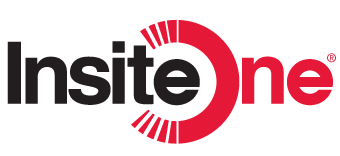AI Mammography: Revolutionizing Breast Cancer Detection with Advanced Technology

Introduction
AI use in Mammography offers a leap forward in revolutionizing women’s health. Mammography screening is a proven path to early breast cancer detection and improved survival rates and is crucial for optimal women’s health. Recent studies have revealed remarkable effectiveness, particularly among different age groups, with screening averting 6.7 breast cancer deaths per 1,000 women in the general population and an even more significant impact of 9.2 deaths averted per 1,000 Black women screened.
The latest research from the U.S. Preventive Services Task Force demonstrates that starting regular screenings at age 40 can make a substantial difference – for women aged 60-69, screening just 377 individuals can save one life, while this number increases to 1,339 for women aged 50-59. These compelling statistics underscore why healthcare providers strongly advocate for regular mammography screening as a vital tool in the fight against breast cancer, particularly given that early detection significantly expands treatment options and improves overall outcomes.
Given the known effectiveness of mammography screening, Artificial Intelligence (AI) has emerged as a game-changer in identifying women early on that are at an increased risk of future disease. AI is not a replacement to the effectiveness and experience of trained radiologists reading studies, but compliments their expertise and acts as an aid, helping them reduce false negatives and positives while reducing call-backs and biopsies.
As imaging centers strive to provide the best possible care while maintaining financial viability, AI in mammography can become an invaluable asset in today’s mammography screening programs. This blog will explore how AI is not only improving early detection rates but also boosting practice profitability when strategically implemented.
Understanding AI Mammography and Patient Benefits
The primary goal of any mammography screening program is the early detection of breast cancer in women. One area that AI can help is in improving the sensitivity and specificity of the exams.
AI algorithms can analyze a much higher volume of imaging data than a radiologist can in a typical workday, therefore, the outcome is that AI tools can reduce the time it would take for radiologists to review the same number of images. Since most AI algorithms are trained with a very high volume of data, these algorithms often can detect abnormalities that may be missed by the human eye earlier in the disease process. This can result in:
- Lower interval cancer rates
- Fewer patient recalls for additional views or biopsies
- More effective treatment options since cancers can be detected earlier
Since a consensus conference is usually required to achieve a high sensitivity and specificity rate, the implementation of AI can help improve this process while freeing up radiologist’s time to focus on more critical cases.
Another area where AI in mammography can help is its ability to minimize false positives. With a reduction in false positives, this can lead to:
- Fewer unnecessary follow-ups, which ultimately can reduce patient anxiety, free up resources to focus on net new patients, and improve overall operations
- A decrease in avoidable biopsies, saving both time and resources. In the US alone, about 10% of women are recalled for further testing, yet only about 0.5% of these women who undergo testing have a positive cancer outcome.
According to the National Cancer Institute, between 20%-50% of screen detected cancers are overdiagnosed, creating undue anxiety in women after informed of a false positive result.
AI Mammography Radiologist Benefits
Beyond improving detection rates, AI tools are revolutionizing workflow in imaging centers in multiple areas that provide a real impact on staffing and center optimization. Some areas where AI can improve workflow include:
- Faster Reading Times: AI can review far more cases than a radiologist can in a given time period. Allowing AI to read cases that are possibly normal can free up radiologist time to read more critical cases. Additionally, when radiologists overread what the AI has performed, they can navigate through the images faster, increasing their overall efficiency.
- Reduced Burnout: By automating time consuming and repetitive tasks during the image analysis process, AI can reduce radiologist fatigue. Pulling patient history, ensuring the latest exam is used for comparison, adding follow-up exams to a worklist, and a number of other workflows can provide more time the radiologist has to review patient images.
- Prioritization: After analyzing imaging data sets, AI can flag high-risk cases, ensuring they receive immediate attention from the radiologist. Using advanced worklists can help filter these high-risk cases and often ensuring the right exam goes to the radiologist with the highest level of expertise in each condition. This improves patient outcomes and ensures priority cases are given the highest priority.
These workflow improvements not only enhance the quality of care but also contribute to increased throughput within the organization, which is one of the key factors in improving practice profitability.
Pros and Cons of AI Mammography
As with any technology, there are pros and cons to using these advanced tools.
Some of the Pros of using AI in mammography and medical imaging include:
- Improved detection rates
- Reduced workload for radiologists
- Potential for earlier diagnosis
While some of the Cons you should consider before implementing AI in your imaging organization include:
- Initial implementation costs can be costly offsetting the time to realize an effective ROI
- Need for ongoing algorithm updates to keep the AI tool continually “learning”. This can be a laborious task and if on-going updates are ignored, the accuracy of your AI algorithm could diminish.
- There is always the potential for over-reliance on technology. AI is a tool to assist radiologists in image interpretation, not a replacement. Over-reliance on AI could lead to some findings going unchecked.
Investing in AI for Long-Term Gains
While the initial investment in AI technology may seem substantial, the long-term financial benefits are can be quite compelling, if the right technology is matched properly to the right facility. Below are a few financial areas to consider when evaluating AI:
Return on Investment (ROI)
At first glance, most AI algorithms do not qualify for reimbursement. With so many algorithms available, yet lacking in reimbursement, how can an imaging center create a strong ROI to move forward with clinical AI tools? The combination of increased efficiency, reduced liability costs, and improved patient outcomes do contribute to a healthy bottom line, but many of those are soft costs that are hard to realize when confronted with the monthly fees associated with many AI solutions. Keep reading to understand how InsiteOne is helping to improve AI availability while keeping costs of those solutions in check.
Innovative Reimbursement Strategies
As part of the adoption process for AI, many imaging organizations are taking a creative approach to offering these solutions, while offsetting the costs to boost revenue.
- Opt-in AI Fee: Voluntary opt-in fees are starting to appear in some of the country’s most prominent imaging centers. These fees typically range from $35-$70, and are paid for in cash, for the patients who choose to have their mammograms analyzed with AI. This approach not only covers the cost of the software but also emphasizes the added value to patients. This approach works well in populations where your patients would be willing to have AI “read” your images in conjunction with a radiologist. InsiteOne can help with the modeling of how adding AI into your practice on a fixed monthly cost can be offset by these cash payments, which can improve overall center revenue.
Expanded Service Offerings
Another area and/or benefit that AI can provide is expanding the service offerings you provide to your patients. If your center only performs mammography studies, other AI algorithms can be added and often can detect subtle findings on mammography studies that could be an indicator for other health problems, such as:
- Cardiac Screening: By leveraging AI capabilities, centers can offer cardiac screenings to detect early signs of coronary artery disease, creating a new revenue stream.
This can provide patients with advance notice and allow early treatment pathways to be established to improve their overall health, while reducing the future burden on the health system, since early detection is often far more cost effective to treat than late-stage detection.
The InsiteOne and NTT DATA Advantage
To fully harness the power of AI in mammography, many imaging centers are turning to partnerships with industry leaders. The collaboration between InsiteOne and NTT DATA offers a comprehensive solution that addresses both the technical and practical aspects of AI implementations:
- Seamless Integration: InsiteOne’s expertise in RIS, PACS, and data storage, all as a fully managed service, ensures that AI tools integrate smoothly with a site’s existing RIS/PACS system, or a solution offered by InsiteOne. InsiteOne brings the expertise of systems integration and managed services, which allow your center to focus on patient care, all while paying a reasonable monthly fee.
- Cutting-Edge Algorithms: NTT DATA’s expertise lies in procuring advanced AI capabilities as part of an integration platform that doesn’t’ limit scalability or growth, should your organization want to expand your AI program in the future. With state-of-the-art detection and analysis tools at their disposal, NTT DATA has the expertise to provide you with guidance on what the best algorithms will be for your organization that provides the highest adoption rate for your patients.
- Data Security and Compliance: Again, with InsiteOne’s long-term focus on robust data storage solutions, robust security is not a second thought in any of our services or offered solutions. Your organization can confidently adopt AI technology while maintaining regulatory compliance and know that your patient data is safe and secure.
Conclusion: A Brighter Future for Women’s Health
Last month, InsiteOne rolled out our AI Powered Mammography program in collaboration with NTT DATA. This Insider Session was recorded and offers more information on the benefits of this program to imaging locations looking to capitalize on the use of AI in their practice, but not sure where to turn or what to choose. By improving detection rates, streamlining workflows, and opening new avenues for profitability, AI is not just a technological advancement – it’s a transformative force in healthcare.
If you would like to learn more about this program, the benefits, costs, and potential revenue increase you could incur, reach out to the team at InsiteOne and start a conversation. Adopting AI in your practice is not a one-time initiative but rather a journey that benefits from the expertise organizations like InsiteOne and NTT DATA have in this industry and can be offered to you through a long-term, consultative approach as the AI in healthcare industry continues to evolve.
Start by downloading the mammography Insider Insight video and then take the next step and reach out to InsiteOne to get more information on our pilot program and how it could benefit your organization and patients care.






